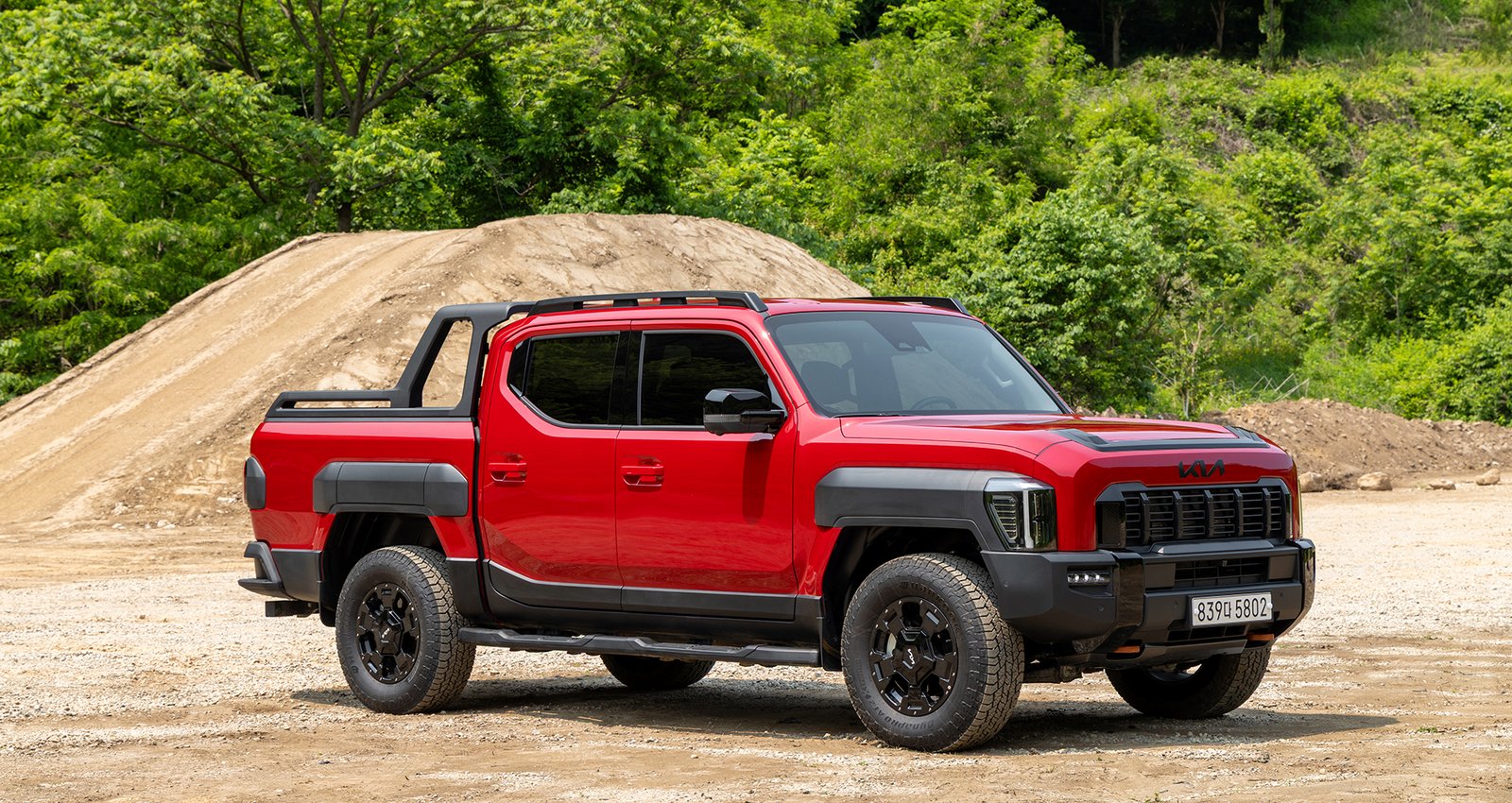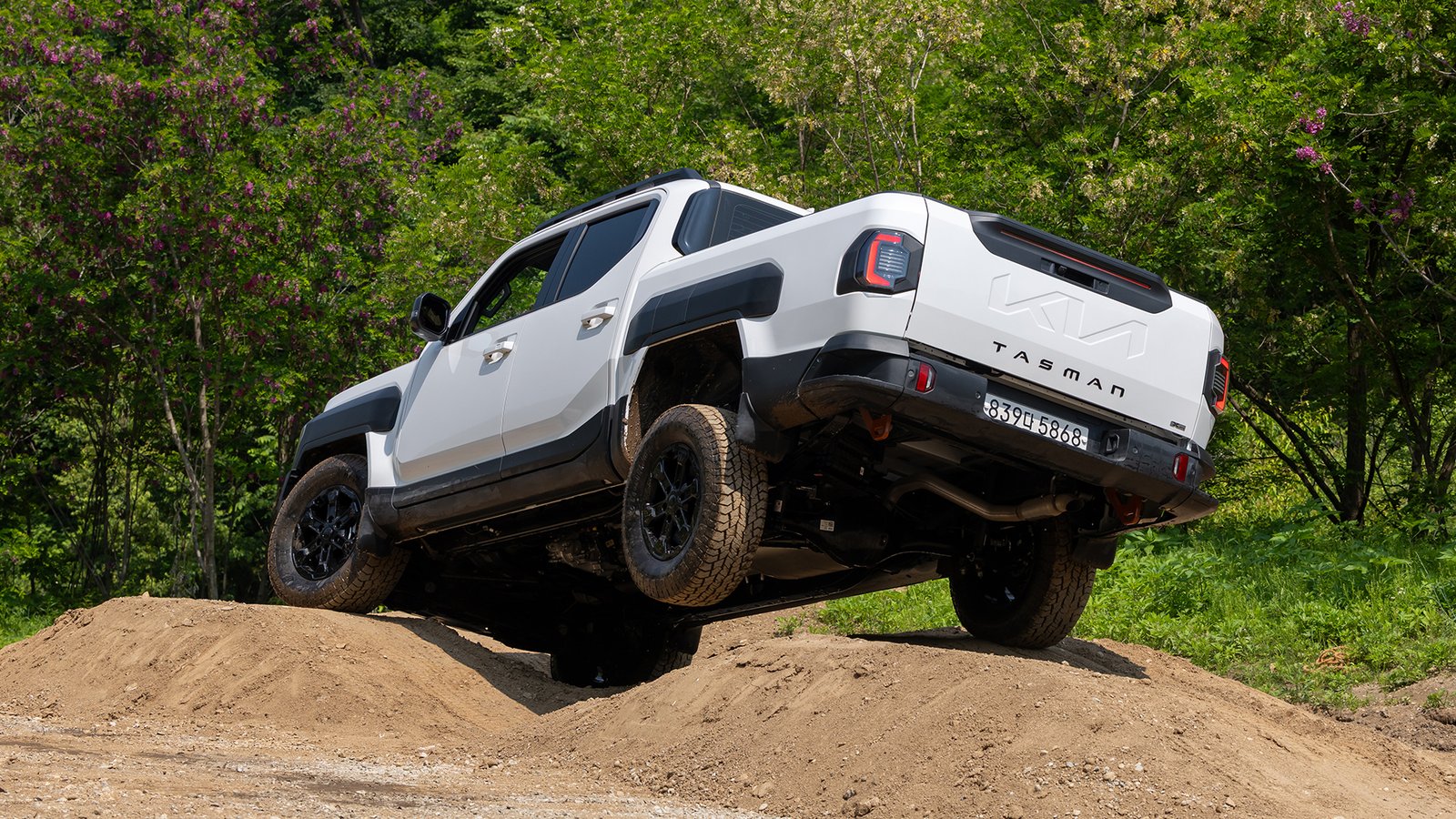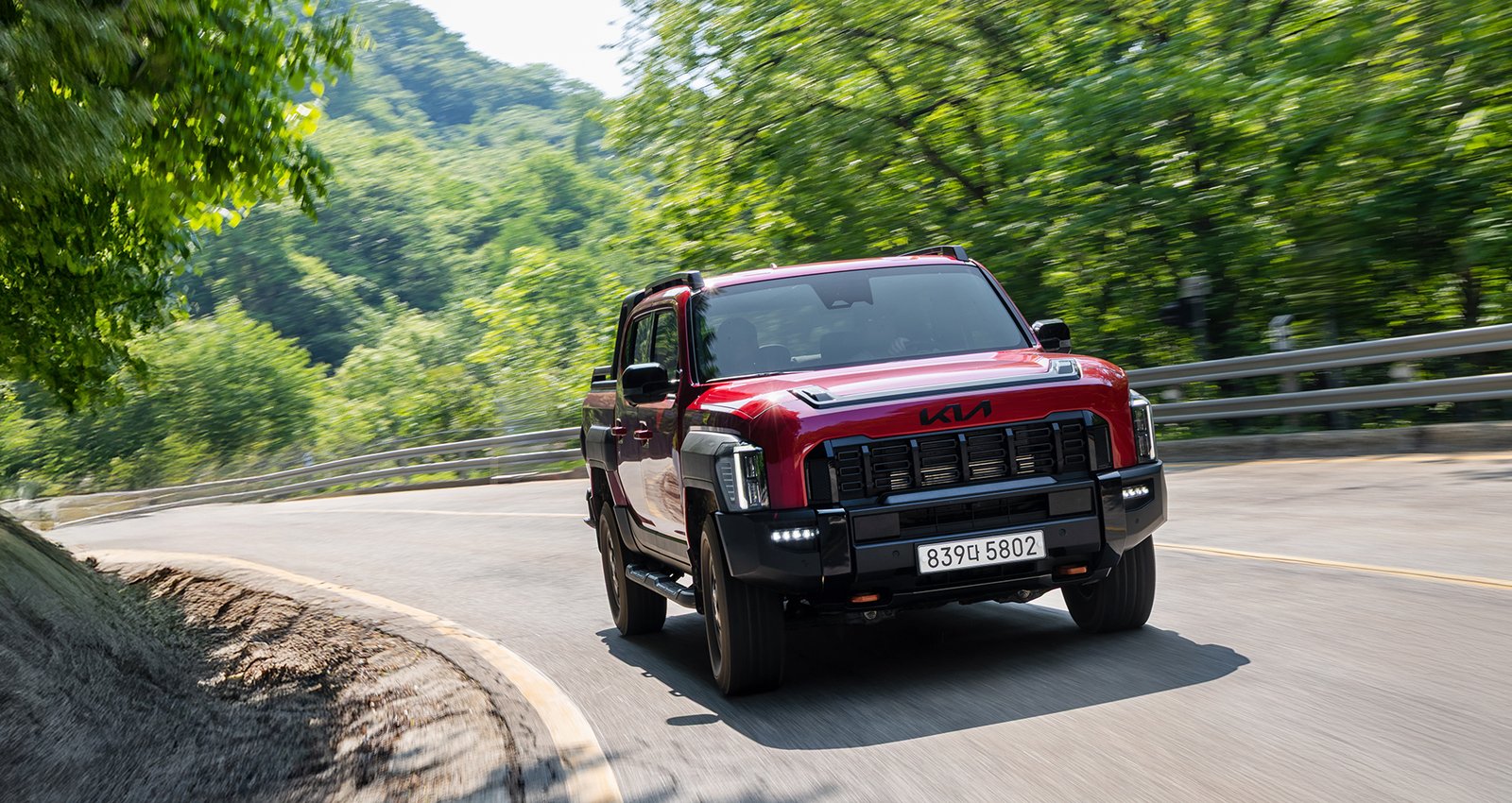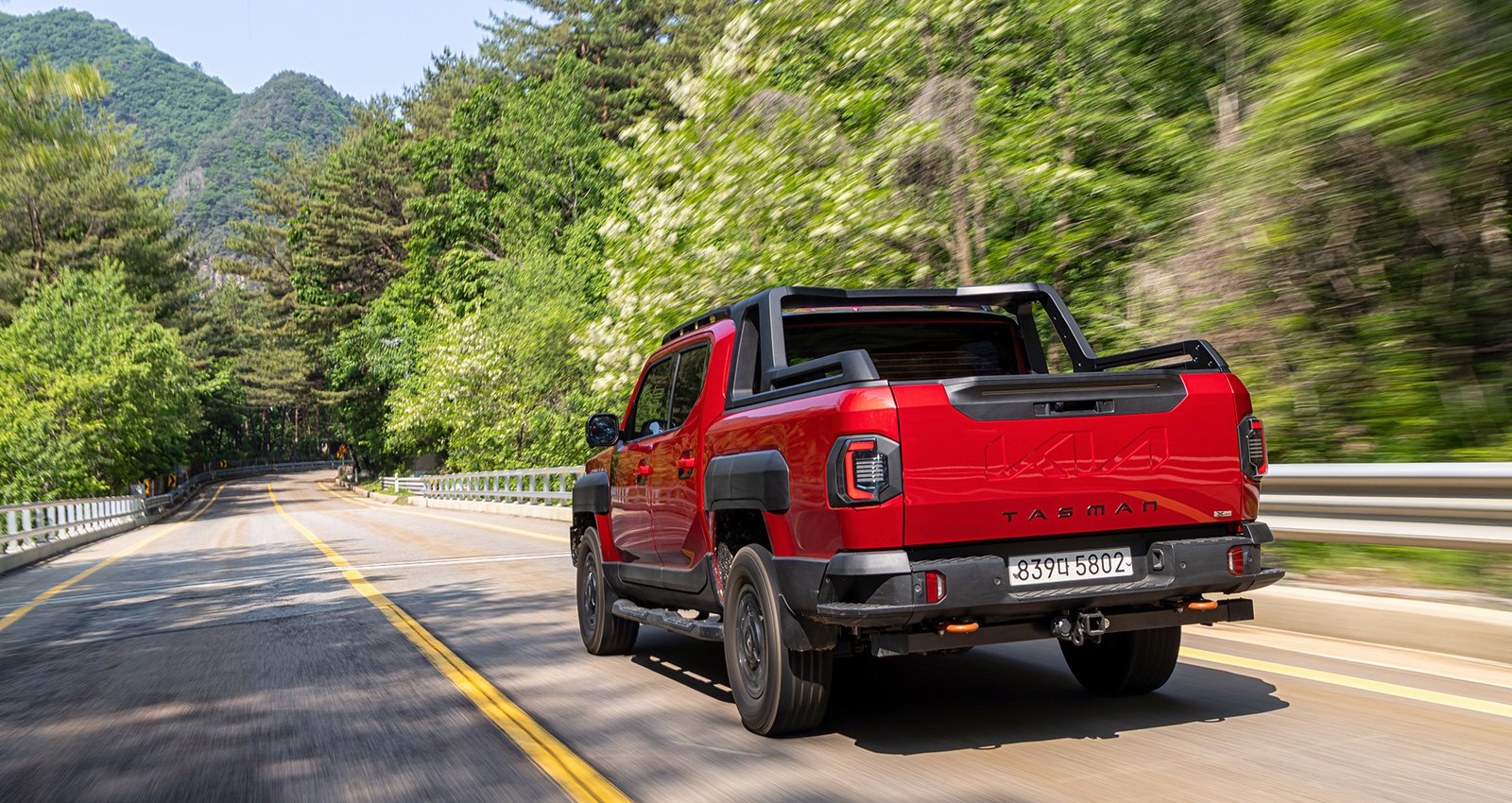Feature article
2025 Kia Tasman Review: Buying Guide
Kia has officially entered the ute market with its all-new 2025 Tasman.

Kia has officially entered the ute market with its all-new 2025 Tasman. Built on a traditional ladder-frame chassis and powered by a robust diesel engine, the Tasman aims to offer serious capability, bold styling and segment-leading cabin tech when it lands in New Zealand in September.
Bold and Functional Design
The Tasman’s styling begins with a bold, upright front end dominated by vertical LED headlights integrated into a thick black bumper. High-sided panels, squared-off cab contours and chunky black cladding also feature.
At the rear, the deep tray includes integrated corner steps, multiple tie-down points (rails and hooks) and a 220V/200W power outlet which will be useful for charging tools, though not sufficient for heavy equipment. A smart addition is the lockable storage cubby behind the right rear wheel arch; perfect for dirty gear like boots or recovery straps.
Workhorse Dimensions and Practicality
At 5.4 metres long and nearly 1.9 metres wide, the Tasman matches key rivals like the Ford Ranger and Toyota Hilux in size. It offers a payload capacity exceeding 1025kg and a 3500kg braked towing capacity across all trims. Kia’s growing range of accessories includes snorkels, electric roller covers, heavy-duty roof racks (rated at 100kg), and load sliders, enhancing its versatility for work or adventure.
Class-Leading Interior
Where the Tasman really shines is inside the cabin. Drawing inspiration from Kia’s SUV lineup, the interior in top grade models feels more like an SUV than a traditional work ute. It features twin 12.3-inch screens, a quality layout and modern switchgear. Physical buttons for climate and media remain for intuitive control.
Unique to the Tasman are sliding and reclining rear seats (X-Line/X-Pro), which offer genuine comfort on longer journeys. The seat bases also flip up, revealing under-seat storage trays and opening up flat floor space for bulky gear or groceries.
Powertrain and Pricing
All Tasmans in New Zealand will be powered by a 2.2-litre turbocharged four-cylinder diesel engine producing 154kW and 440Nm, paired with an eight-speed automatic transmission tuned specifically for life in this ute. The result is smooth, intelligent shifting and strong mid-range torque.
At launch, all five variants will be double-cab, 4WD models, starting at $52,690 and topping out at $79,690. A single-cab and double-cab chassis variant are due in 2026. Even base models come generously equipped with LED headlights, a trailer brake controller, and terrain mode selection.
On-Road Refinement
Initial impressions from driving the petrol variant in Korea were positive, with the eight-speed auto impressing for its smoothness and timing. In New Zealand, the diesel variant proved just as refined, with well-managed noise and vibration. The unladen ride was firmer and slightly unsettled, a common trait in leaf-sprung utes, but Kia is addressing this with a local suspension tune ahead of launch.
Steering is light and consistent, offering comfort over outright feedback, an approach that suits most ute buyers looking for ease and predictability on long drives.
Off-Road Capability
The Tasman’s off-road abilities are equally impressive. A rotary dial controls 2H, 4H, 4A, and 4L settings, while the terrain mode selector adapts for mud, snow, sand, or rock. Features like pitch/roll sensors, tyre pressure monitoring and a front camera enhance off-road confidence. “X-Track” is a low-speed off-road cruise control that manages throttle and braking at speeds up to 6km/h, allowing drivers to focus on steering through tricky terrain.
Verdict
Kia may be a newcomer to the ute market, but the Tasman arrives with genuine credibility. It blends rugged practicality with advanced tech and premium comfort. Though the ride needs refining for Kiwi conditions, the Tasman is shaping up as a serious rival to long-standing favourites like the Ranger and Hilux. Expect it to make a significant impact when it hits local showrooms in late 2025.
Author
Other articles you might like








